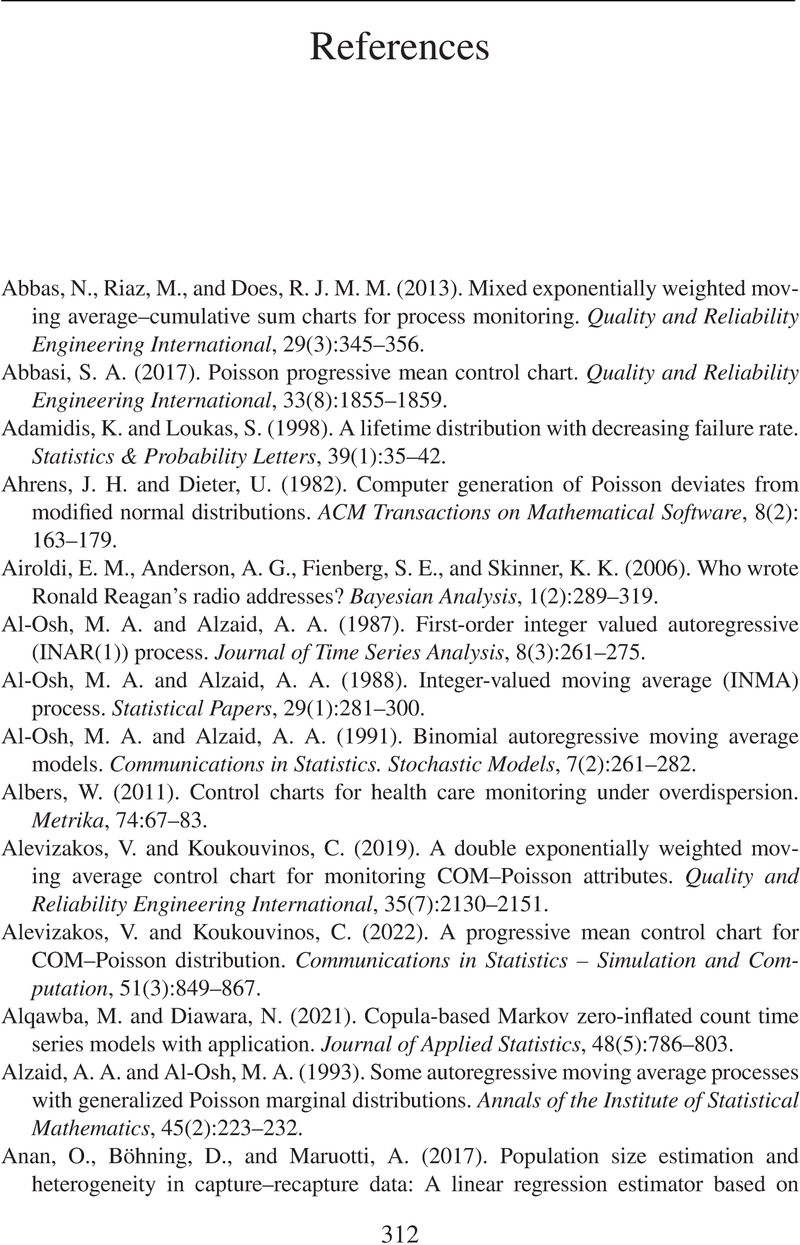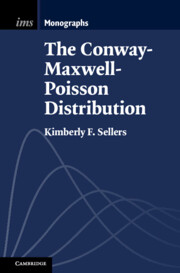Book contents
- Frontmatter
- Dedication
- Contents
- Figures
- Tables
- Preface
- Acknowledgments
- 1 Introduction: Count Data Containing Dispersion
- 2 The Conway–Maxwell–Poisson (COM–Poisson) Distribution
- 3 Distributional Extensions and Generalities
- 4 Multivariate Forms of the COM–Poisson Distribution
- 5 COM–Poisson Regression
- 6 COM–Poisson Control Charts
- 7 COM–Poisson Models for Serially Dependent Count Data
- 8 COM–Poisson Cure Rate Models
- References
- Index
- References
References
Published online by Cambridge University Press: 02 March 2023
- Frontmatter
- Dedication
- Contents
- Figures
- Tables
- Preface
- Acknowledgments
- 1 Introduction: Count Data Containing Dispersion
- 2 The Conway–Maxwell–Poisson (COM–Poisson) Distribution
- 3 Distributional Extensions and Generalities
- 4 Multivariate Forms of the COM–Poisson Distribution
- 5 COM–Poisson Regression
- 6 COM–Poisson Control Charts
- 7 COM–Poisson Models for Serially Dependent Count Data
- 8 COM–Poisson Cure Rate Models
- References
- Index
- References
Summary

- Type
- Chapter
- Information
- The Conway–Maxwell–Poisson Distribution , pp. 312 - 326Publisher: Cambridge University PressPrint publication year: 2023



